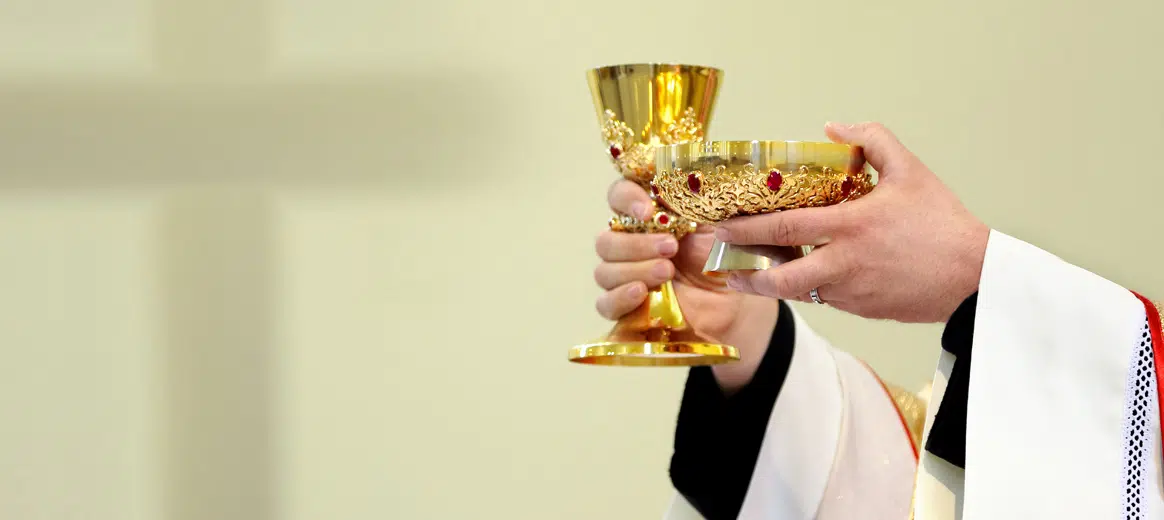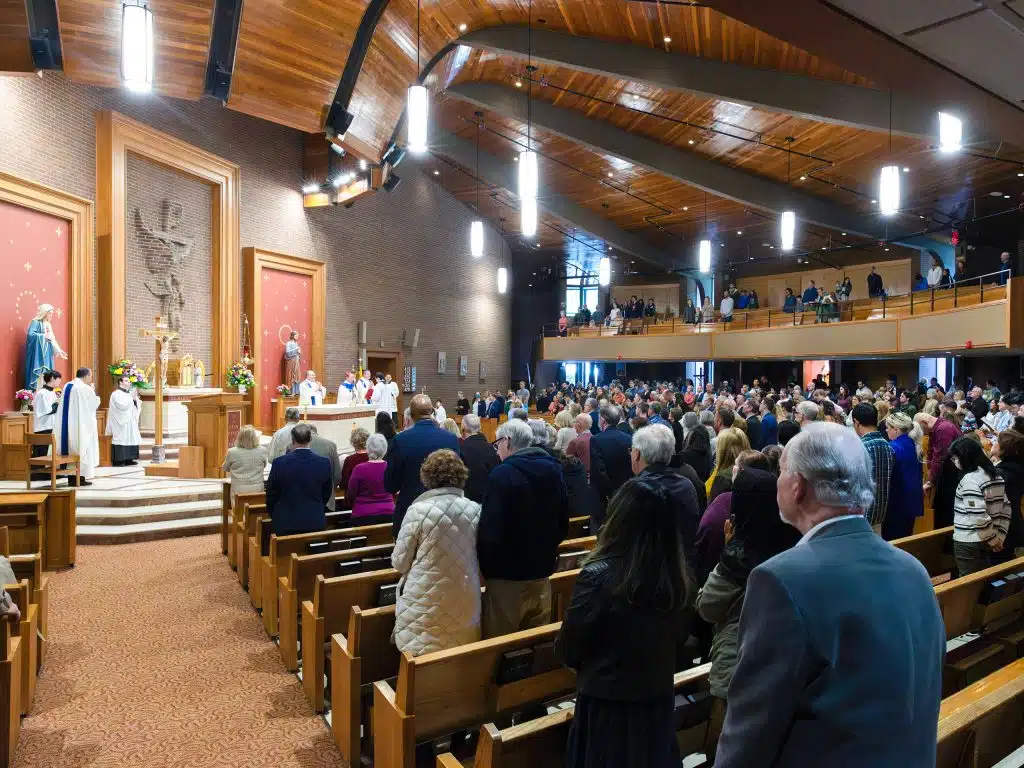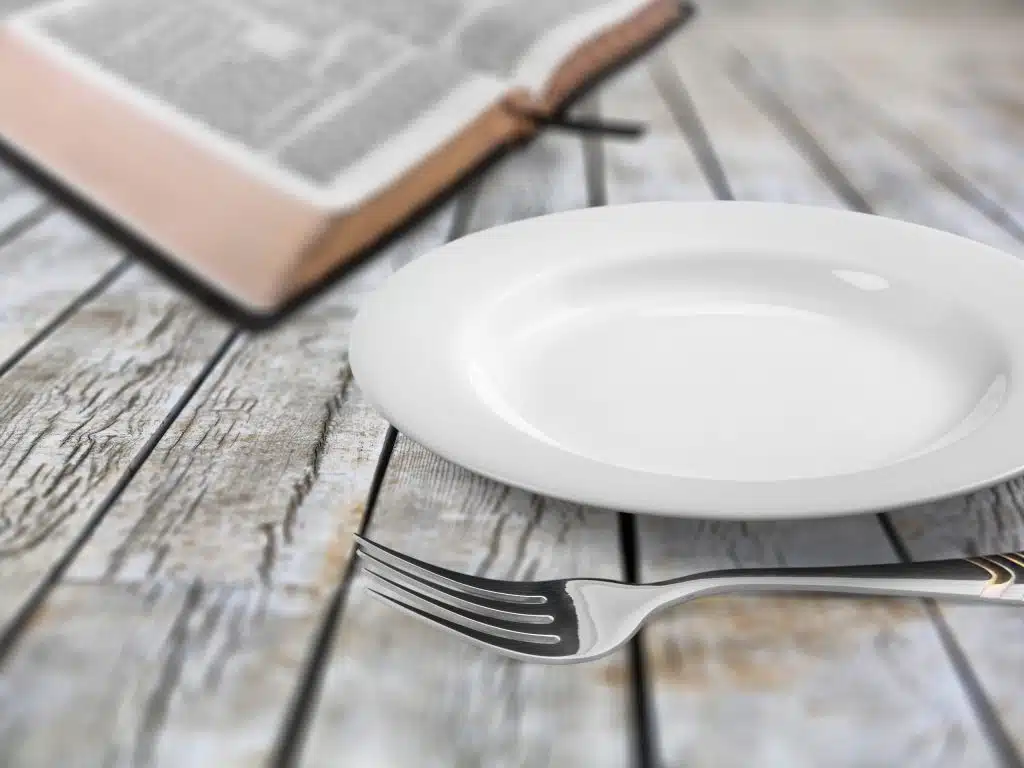“On hearing it, many of his disciples said, ‘This is a hard teaching. Who can accept it?’ … From this time many of his disciples turned back and no longer followed him” (Jn 6:60, 66).
What did Jesus say that caused his disciples to turn their backs on him? He said, directly and repeatedly, “Unless you eat the flesh of the Son of Man and drink His blood, you will not have life within you.” And, to clarify he wasn’t speaking symbolically, “My flesh is real food, and my blood is real drink.”
He was telling them, for the first time, about his real presence — body, blood, soul and divinity — in the Eucharist.
And that sounded just a little too weird for them.
According to the Pew Research Center, his modern-day disciples aren’t handling the question a whole lot better. Their recent study revealed that less than a third of all Catholics believe in transubstantiation — that the Eucharist is actually the body and blood of Christ. Among those who attend Mass weekly, the numbers get slightly better — 63 percent believe in transubstantiation. But still, that means that even among regularly practicing Catholics, over a third are either unaware of the doctrine (23 percent) or are aware but reject it (14 percent).
I am saddened by these results, but not remotely surprised. Nor do I necessarily blame these disbelieving Catholics. How can we expect them to know what they are not aware of, or has never adequately been explained to them? A significant majority of baptized Catholics don’t attend Mass. And among those who do, most receive little or no instruction about their faith outside the weekly 10-minute homily, which is quickly forgotten, rarely about the Eucharist, and not really intended to function as a complete catechesis on the basics of the faith, anyway.
I don’t think that Pew studied the percentage of diocesan newspaper readers who don’t believe in the Real Presence, but given the numbers above, I suspect there are more than a few of you. And so, I think we all could use a brief review.
First of all, it is true. Crazy as it seems, we actually believe that a small wafer and a chalice of wine become the body, blood, soul and divinity of Jesus Christ. It has seemed crazy since the beginning, as the passage above demonstrated. What I find interesting is that, when the disciples walked away, Jesus didn’t chase them, didn’t try to explain that he was only speaking symbolically. He merely turned to the Twelve and asked if they were going to leave, too. They were as baffled as the others, but remained because, as they said, “Where else would we go? You have the words of eternal life.”
And so, at the Last Supper, Jesus broke the bread and said, “This is my Body.” And the Eucharist was instituted. This was the understanding of the apostles who were present, and of those who learned directly from the apostles. The church from the very earliest times understood and taught that the Eucharist is the body and blood of Christ. In various Eucharistic miracles over the centuries, consecrated hosts have bled, or actually become flesh. In at least one case (Lanciano — Google it), scientific evaluation confirmed that the sample consists of cardiac tissue, which contains no preservatives and yet has not decayed in more than 800 years.
When we approach the altar for communion, the priest holds up the host and says, “The body of Christ.” And we respond, “Amen.” Which is an affirmation of truth, of our belief. Which in turn means that a significant percentage of Catholics on any given Sunday are essentially standing up there and saying they believe it when they don’t. Which is unfortunate, to say the least.
The Vatican II document “Lumen Gentium” called the Eucharist “The source and summit of Christian life.” Through it, Christ truly becomes one with us. His body is incorporated into our bodies. We become “one flesh.” He isn’t just a spiritual presence in our lives. He actually lives in us in the most real, most tangible way possible. Through worthily receiving him, we are transformed. We put on Christ, we become “new creations.” We are energized and empowered to bring him to the world.
Even apart from receiving him, he changes us through this Communion. Mother Teresa of Kolkata and her sisters spent an hour each day adoring Jesus in the Eucharist. She said that her sisters would not have been able to do the work they did for a single week without the graces they received from that time of adoration. She also said: “Adoration of the Blessed Sacrament is the best time you will spend on earth. It will make your soul everlastingly more glorious and beautiful in Heaven. A Holy Hour of adoration helps bring everlasting peace to your soul and in your family. It brings us personal peace and strength. It brings us a greater love for Jesus, for each other, and for the poor. Every holy hour deepens our union with Him and bears much fruit.”
It saddens me that so many Catholics leave the church, not understanding the great Eucharistic treasure they are renouncing. And it saddens me even more that so many who remain either don’t understand or have lost their faith in this most precious gift.
I want to encourage all of you to rediscover the Eucharist. You can’t just passively settle for learning whatever you hear in the Sunday homily. The saints have been writing about the glories of the Eucharist for as long as we have had saints. Google it. Read and meditate. Better yet, read and meditate in his very presence, in your local Eucharistic adoration chapel. And then receive him often, and worthily.
Don’t be the disciple who walks away. Be the one who stays at the Master’s feet, because he has the words of eternal life.



